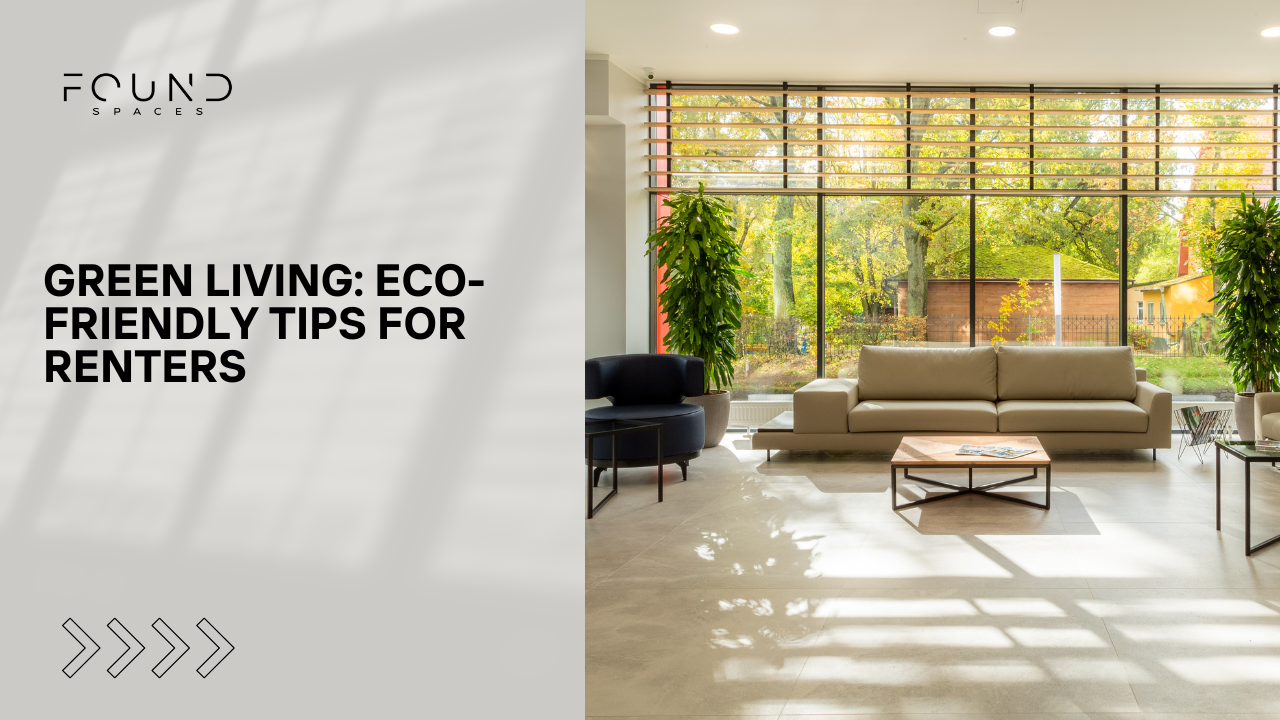In today’s environmentally conscious world, sustainability is not just a trend but a lifestyle. Many renters are eager to adopt green living practices to reduce their carbon footprint and enhance their quality of life. Whether you’re a tenant looking to make your space more eco-friendly or a landlord aiming to attract sustainability-minded renters, incorporating eco-friendly practices can significantly impact the environment and your well-being. Here’s a comprehensive guide to embracing green living in your rental space.

1. Reduce Energy Consumption
Energy efficiency is at the heart of green living. Renters can adopt simple practices to reduce their energy use significantly:
- Switch to LED bulbs: LEDs are more energy-efficient and have a longer lifespan than traditional bulbs.
- Use smart power strips: These can cut power to devices when not in use, reducing ‘phantom’ energy waste.
- Optimize heating and cooling: Adding rugs can help insulate floors, and using thermal curtains can keep heat in during winter and out during summer. Always adjust your thermostat by a few degrees when you’re not home to save energy.
2. Embrace Water Conservation
Water is a precious resource, and conserving it is a critical component of sustainable living:
- Fix leaks promptly: A dripping faucet can waste a lot of water over time. Report or fix any leaks as soon as possible.
- Install low-flow fixtures: Consider requesting or installing low-flow showerheads and taps to reduce water use without sacrificing performance.
- Be water-wise in the kitchen: Wash full loads in your dishwasher, use the eco setting if available, and wash produce in a bowl of water instead of running the tap.
3. Choose Sustainable Materials

Whether decorating or renovating, selecting sustainable materials can make a big difference:
- Opt for natural fibers: Choose furnishings made from natural, renewable materials such as bamboo, wool, or recycled materials.
- Use non-toxic paints: When updating your space, use low in volatile organic compounds (VOCs) paints to improve indoor air quality.
- Consider second-hand or vintage items: Give pre-loved items a new lease on life by choosing second-hand or vintage furniture and decor. Not only does this help reduce waste, but it also adds a unique touch to your space. You can find great treasures at thrift stores, estate sales, or online marketplaces dedicated to selling used items.
- Look for certifications: When buying products such as flooring, paints, or fixtures, look for certifications that indicate their sustainability. For example, Built Green Canada is a certification program focused on residential buildings. This includes single-family homes and high-density buildings as well as renovations and Net Zero+, or The Canada Green Building Council, which champions green buildings because they are healthier for people and the planet.
- Consider the life cycle of products: When choosing materials, consider not only their immediate environmental impact but also their long-term impact. For example, opt for durable materials that are easy to repair, reducing the need for frequent replacements. Additionally, choose products that can be recycled or repurposed at the end of their lifecycle instead of ending up in landfills.
Conclusion
In conclusion, living an eco-friendly lifestyle as a renter is not only possible but can also significantly reduce your environmental footprint. By implementing these tips and incorporating sustainable practices into your daily life, you can contribute to a healthier planet while still enjoying the comfort of your rented space.
Remember to start small by making simple changes such as using energy-efficient appliances and LED light bulbs, reducing water consumption, and practicing proper waste management. These actions can go a long way in conserving resources and lowering utility bills. In summary, by adopting eco-friendly practices and making conscious choices as a renter, you can make a positive




